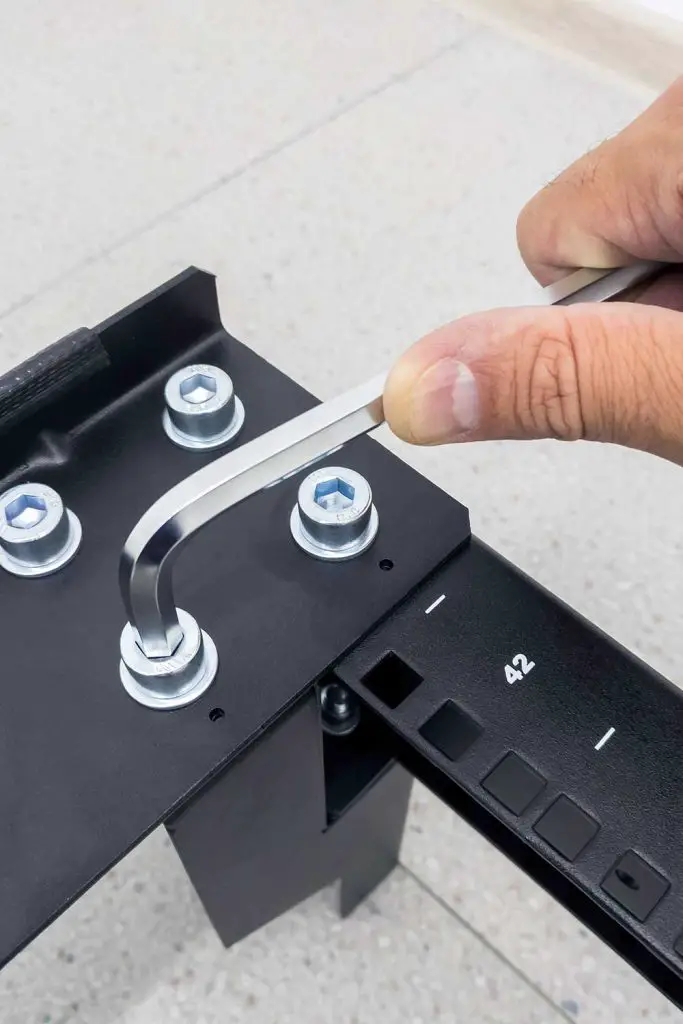The Real Name For Allen Keys And Why There Are Two Ends!

When it comes to common tools found in most toolboxes, the Allen key is undoubtedly one of them. Yet, have you ever wondered about its real name and why it has two ends? In this comprehensive guide, we will delve deep into the world of Allen keys, exploring their origins, their true name, and the reasons behind their dual-ended design. So, let’s tighten our mental bolts and loosen the mysteries surrounding this everyday tool.
The Origin of Allen Keys
Allen keys, also known as hex keys or Allen wrenches, have a fascinating history. Named after their inventor, Allen Keys were created by William G. Allen, an American engineer, in the early 20th century. This invention revolutionized the world of fasteners and DIY projects. Today, they are indispensable tools in various industries, from automotive to furniture assembly.
The True Name: Hex Keys
Although many people refer to them as Allen keys, the correct and more generic term is “hex keys.” Hex keys derive their name from the shape of the fasteners they are designed to work with: hexagonal sockets. While “Allen key” is a common colloquial term, it is essential to know the correct terminology, especially when communicating in professional or technical settings.
Understanding Hexagonal Fasteners
To comprehend the importance of hex keys, we need to delve into the world of hexagonal fasteners. Hexagonal, or hex, fasteners feature six sides, creating a secure and efficient grip for tightening or loosening bolts and screws. This design reduces the risk of slippage, making hexagonal fasteners a preferred choice in various applications.
The Dual-Ended Design
One of the distinctive features of hex keys is their dual-ended design. Unlike many other tools, hex keys have two ends with different-sized hexagonal tips. This design serves a practical purpose, allowing users to work with various fastener sizes using a single tool. But why are there two ends, and how do they differ?
Metric vs. Imperial Measurements
Hex keys come in both metric and imperial measurements, and this is precisely why they have two ends. Metric hex keys are designed to fit metric-sized fasteners, while imperial hex keys work with fasteners measured in inches. This dual-ended design ensures that users can tackle a wide range of fastening needs, regardless of the measurement system in use.
Metric Hex Keys
Metric hex keys are distinguished by their measurement markings in millimeters. They typically range from 1mm to 10mm, with various sizes in between. Metric hex keys are commonly used in regions where the metric system is the standard for measurements, such as most European countries and many others worldwide.
Imperial Hex Keys
Imperial hex keys, on the other hand, are marked in inches and are more prevalent in countries like the United States, where the imperial measurement system is still widely used. Imperial hex keys are available in sizes ranging from 1/16 inch to 3/8 inch, catering to the needs of various applications.
Interchangeability of Hex Keys
While metric and imperial hex keys are designed for different measurement systems, they can sometimes be used interchangeably in a pinch. However, it’s crucial to exercise caution when doing so, as using the wrong-sized hex key may strip the fastener or damage the tool.
Advantages of the Dual-Ended Design
The dual-ended design of hex keys offers several advantages. Firstly, it saves space in your toolbox, as you only need one tool to handle different fastener sizes. Secondly, it simplifies the selection process, ensuring that you can quickly find the right size for the job. Lastly, it reduces the cost of purchasing multiple tools, making it a cost-effective choice for both professionals and DIY enthusiasts.
Tips for Proper Hex Key Use
To get the most out of your hex keys, it’s essential to use them correctly. Here are some tips to keep in mind:
- Ensure the hex key is fully inserted into the fastener.
- Apply even pressure when turning to avoid stripping the fastener or damaging the tool.
- Keep your hex keys clean and free of debris to maintain a secure grip.
- Store your hex keys in a designated toolbox or holder to prevent loss or damage.
Hex Keys in Everyday Life
Hex keys have a wide range of applications in various industries. From assembling furniture to working on bicycles, appliances, and automotive repairs, hex keys play a crucial role in keeping things together. Their versatility and ease of use make them an invaluable tool in any toolkit.
The Evolution of Hex Key Design
Over the years, hex key design has evolved to meet the demands of modern industries. Today, you can find hex keys with ergonomic handles for improved comfort during extended use. Additionally, some hex keys feature ball-end designs, allowing for more flexible access to fasteners at different angles.
Where to Buy Quality Hex Keys
When purchasing hex keys, it’s essential to invest in quality tools that will stand the test of time. You can find hex keys at hardware stores, home improvement centers, and online retailers. Brands like Wiha, Bondhus, and Wera are known for producing high-quality hex keys that are both durable and reliable.

More interesting articles you may be interested in reading:

How To Remove A Tree Stump Painlessly
10 Vital Home Maintenance Tasks You’ll Regret If You Forget
See How Much Propane Is Left In A Tank With No Gauge
Thanks for reading and be sure to share this info with your friends using the social share buttons below.
Talking about social stuff, consider liking our Facebook page to keep up to date with our articles. Check out our other articles for more mental scoops!
